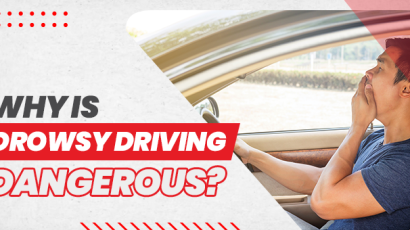
As soon as you get behind the wheel, things might start getting a little crazy. Many people struggle with the driving test questions and answers, and as a result, they have to retake it.
At first glance, it may seem that the exam is set up to fail you; however, this is not the case at all. Questions that seem to be the same may be written differently. In addition, there is no space for ambiguity; you either know or do not know.
You can always guess, but there is only a 25% chance of getting it right in certain circumstances.
Here are some of the most often asked driving test questions on an exam.
- 1. Determine Which Of The Following Statements Is TRUE/TRUE…
This is not just a frequently asked question, but it is also challenging. Test takers often get this sort of question incorrect, regardless of the subject area. Therefore, reading everything thoroughly is necessary since only one question will be correct.
Not only that, but many individuals react poorly under pressure and hence choose a response that is out of context or inaccurate altogether. There will be a lot of questions like these spanning a wide range of subjects, so be ready and study the questions and answers completely before answering.
- What Do You Do When You Get a Blowout in Your Tire?
In comparison to the tension of a tire blowout, taking the exam is nothing at all. Many test-takers cannot come up with an answer to this question during the theoretical driving exam since they are under so much pressure.
In order to keep the automobile from spinning out of control, they should choose the option that would slow it down in a safe way. Participants must keep in mind that such questions are highly literal.
- What Do You Do When You Cross a Roundabout Island at an Intersection?
Frequently, test-takers in driving license tests have incorrect answers to questions about junctions. There are several examples in the written examination when it comes to junctions. Most test-takers fail in the area of junctions and roundabout islands.
A roundabout is only another method to arrange a junction; there is no fundamental shift in the way things are done. The same laws apply, except drivers must use their blinkers to indicate where they want to travel. Nevertheless, it is usually good to be informed of the roundabout laws when dealing with regular issues. It is a little bit difficult in principle, but it would not be a problem for the rest of your life once you get the hang of it.
- Which Headlights of Your Vehicle Must Be On?
Many exam takers are stumped by this question as well. The lights on most current automobiles are automatically activated, but certain vehicles still need you to switch them on manually. Most exam takers are not prepared for it.
All lights must be switched on from thirty minutes before sunset to thirty minutes after daybreak. Even though this may seem to be a time-consuming process, the solution is always highly precise.
After further investigation, it was discovered that a significant number of test-takers selected the option indicating that the lights must be switched on. This may seem to be accurate, but it is not. Consider more technical responses when addressing this sort of issue; the car’s lights do not always need to be on.
- In What Manner Do Drivers Approaching a Left Turning Intersection?
The riskiest thing a motorist can do is turn left at an intersection. Therefore, drivers should only make a turn if they can complete it without stopping. That is also why it is a common subject of pre-employment screenings.
In principle, it seems to be an easy operation, but it is much more difficult to do in actuality. The main hazard in these scenarios is a miscalculation of the distance between you and incoming traffic.
- After Using the Parking Brake, What Should You Do While Parking by a Curb on a Downhill Slope?
One of the most difficult forms of parking is downhill parking. This is something you can count on throughout your driving test in Kenya without the need for doubt. Everyone has to deal with it at some point.
Downhill parking is accomplished by applying pressure to the handbrake and rotating the wheels in a direction away from the curb. Many individuals are surprised to learn that their automobiles will roll down the slope even if the parking brake is engaged.
- How Far Away is a White Headlight of the Bicycle Visible at Night?
If you have a hard time recalling these questions, memorizing the answers is considerably more difficult. To be more specific, those requiring memorization of numerical values. The most common replies are 300, 400, and 500 feet. In order to answer this question, you must have ridden a bicycle. Guessing maybe the only way to get it correctly.
The more drivers can see the bike’s light, the simpler it is for them to realize that there is a bike ahead of them. Of course, there are certain situations when this response may not be the case since we do not live in a civilized world. Many additional bicycling issues may arise; therefore, it is a good idea to familiarize yourself with the subject of vehicle safety.
- On a Two-lane Road with a Posted Speed Limit of 55 mph, How Much Room Do You Need to Pass Another Vehicle?
Who can say for sure what constitutes a safe passing space? You do not know this in the actual world since the exam does not offer you this information. A more accurate explanation has to do with the passage of time, not with the physical location of objects. At least for ten to twelve seconds.
If you get this answer incorrect, you are not the only one who has. For some inexplicable reason, most exam takers are unable to complete it correctly.
- When You See a School Bus with Two Lanes Going Opposite Directions, Do You Have to Stop?
Drivers despise bus stops because they are so frequent. It is simply a few minutes, and it is tempting to walk right by the bus. However, if it is a school bus, it might be unlawful to do that. Make sure you are aware of the laws in your own state.
If you are driving in the same direction as the bus, you should stop. You must likewise stop if you are driving in the other direction on a two-lane highway in several states. It is crucial to keep an eye out for toddlers darting crossing the roadway on narrow two-lane highways.










